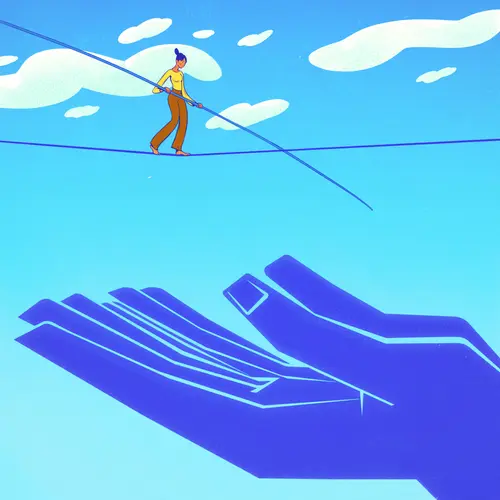What are the best ways to exercise and improve your bone health when you have osteoporosis? There are three main types of activities to target your bones:
Weight-bearing exercise: This includes any activity where you have to hold your body up against gravity. For instance, biking isn’t weight-bearing, because you’re sitting on a bike. And in swimming, the water is holding you up.
Resistance training: This type of workout includes moves that use your body weight (like push-ups, squats, and lunges), or resistance bands, hand-held weights, or weight machines. They’ll strengthen your bones as well as your muscles.
Balance training: The goal is to help prevent falls and improve dynamic function, which is how well you move.
You have many options. Choose those that sound fun, and check with your health care provider to make sure it’s a good choice for you. Because osteoporosis makes bone fractures more likely, be cautious about activities that risk serious falls, like downhill skiing, ice skating, or inline skating. And if you have bone thinning in your spine, you may want to skip any deep backbends in yoga.
1. Strength Training
Lifting weights, using the weight machines at a gym, or doing calisthenics with a resistance band or your own body weight are forms of strength or resistance training. You're working against some form of resistance to stress a sequence of muscles and bones.
Strength train at least twice a week to stimulate bone growth. If you’re not sure how to get started, a trainer can show you simple moves to do safely. Tell them that you have osteoporosis and what your goals are.
2. Yoga
Yoga checks all three boxes: weight-bearing, resistance training (using your own body weight), and balance training.
In one study, researchers tracked what happened to bone mineral density in 227 people who committed to do just 12 minutes of daily yoga, following a specific series of poses. The study lasted for 10 years, and the people who signed up for it got DEXA scans to check on their bone mineral density. Their average age was 68, and 83% of them had osteoporosis or osteopenia. The result: Bone mineral density improved in the spine and the femur (thigh bone).
Standing poses like Warrior I and II work the large bones of the hips and legs, while poses like Downward Dog also work the wrists, arms, and shoulders. The Cobra and Locust poses, which focus on the trunk and back muscles, may help preserve the health of the spine.
Yoga also sharpens your balance, coordination, concentration, and body awareness, which can help prevent falls. Let your teacher know that you have osteoporosis, so that they can provide any modifications you may need.
3. Tai Chi
A traditional Chinese practice of slow, graceful moves, tai chi helps with coordination as well as bone health. In 2022, researchers published a review of 24 studies on tai chi for bone health in postmenopausal women. It showed that after six months of tai chi training, bone mineral density improved in three specific areas: the lumbar spine, as well as two parts of the hip: the femoral neck and the trochanter. It’s also good for your balance.
4. Brisk Walking
This simple, free workout is a great way to boost your bone health. A study of nurses found that those who walked for four hours a week were 41% less likely to fracture a hip, compared to those who walked for less than an hour a week. Brisk walking is best, but you can adapt your speed to your current fitness level.
5. Golf
Shouldering that golf bag around 18 holes, and swinging the big clubs to drive the ball long, add up to a lot of upper-body work. And all that walking, and chasing balls lost in the rough, means plenty of work for your hips and spine.
6. Dancing
Maybe you've got two left feet. No problem! Even if you're not Ginger Rogers, you might enjoy social dances such as the waltz, tango, salsa, samba, or East Coast swing. Or you might try a gentle adult ballet, tap, African dance, or jazz dance class. There are also dance-inspired aerobics classes at gyms and online. Many combine strength training with dance or step moves, and are good for your balance. You can also dance at home without a formal class.
7. Hiking
You'll get out in nature and get low-impact weight-bearing activity on your next hike. The work of weight-bearing – and the impact as your feet hit the ground – can boost bone density, especially in your hips. You'll get even more impact on those bones if you're going uphill or downhill. More impact on your feet and legs translates into more bone density.
And with hiking, boredom is rarely an issue. You can socialize in a hiking club and enjoy new landscapes.
8. Racket Sports
Pickleball, tennis, squash, and paddle tennis can rally your bone density. You're stressing your racket arm, wrist, and shoulder every time you hit the ball, and working your hips and spine with all that running around.
If you play singles, you'll get a lot more from your workout in terms of bone health, since you'll be running around the court more.
Stick With It
Be patient. The bone-building phase in young adults – at its speediest – takes three to four months. Count on it taking a lot longer if you have osteoporosis or are older. So you won't see big changes on bone density tests quickly. Bones change slowly, but it does happen.

